|
|
|
|
|
|
|
|
April 27, 2023 | ISSUE 73 |
|
|
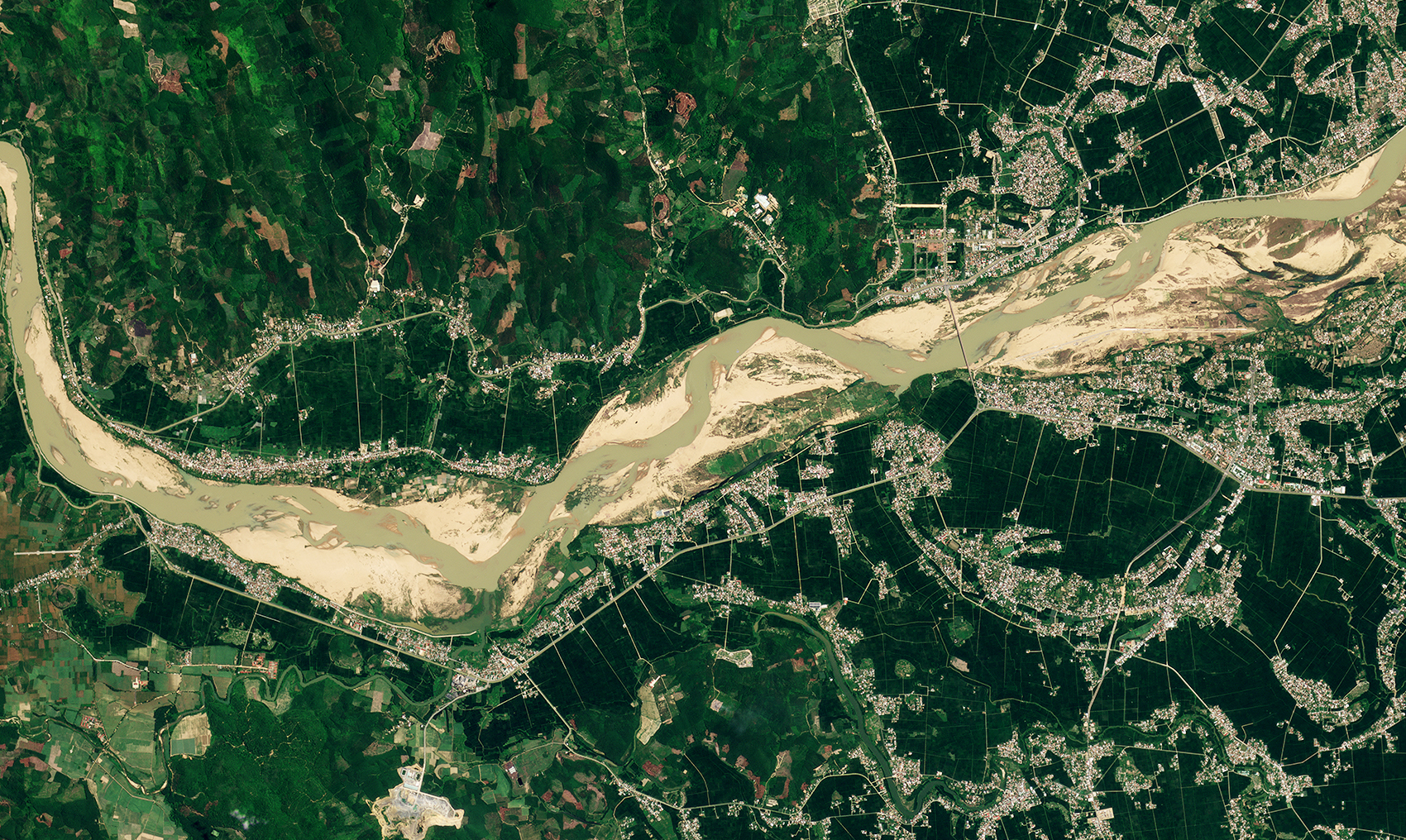 |
PlanetScope • Ba River, Vietnam • July 22, 2022 |
In this week’s issue:
Having trouble viewing images? Then read this issue on Medium! |
|
|
|
|
FEATURE STORYSand
Sand. It’s coarse, rough, irritating, and it gets everywhere—perhaps more than you think. Sand is the second most used natural resource after water and the most extracted solid material, accounting for 85% of global mineral extraction. Like a messy trip to the beach, it has infiltrated our pockets and all our surroundings. It’s the key ingredient in cement, asphalt, glass, and silicon chips. Our cities are glorified sand castles, and our most advanced tech is built from this unimposing substance.
But not all sand is created equal. Desert sand, sculpted over millennia by the wind, is too smooth for cement production. But the sand formed by water is perfect, making Earth’s rivers, deltas, lakeshores, and beaches ground zero for extraction. One major problem is that this immense industry is largely unregulated. Criminal enterprises and dangerous working conditions have bloomed in the absence of adequate monitoring and enforcement. The sand mafias that often run these markets are no sandlot bullies. They understand, perhaps better than anyone, that on these beaches there’s a lot to gain, and even more to lose.
|
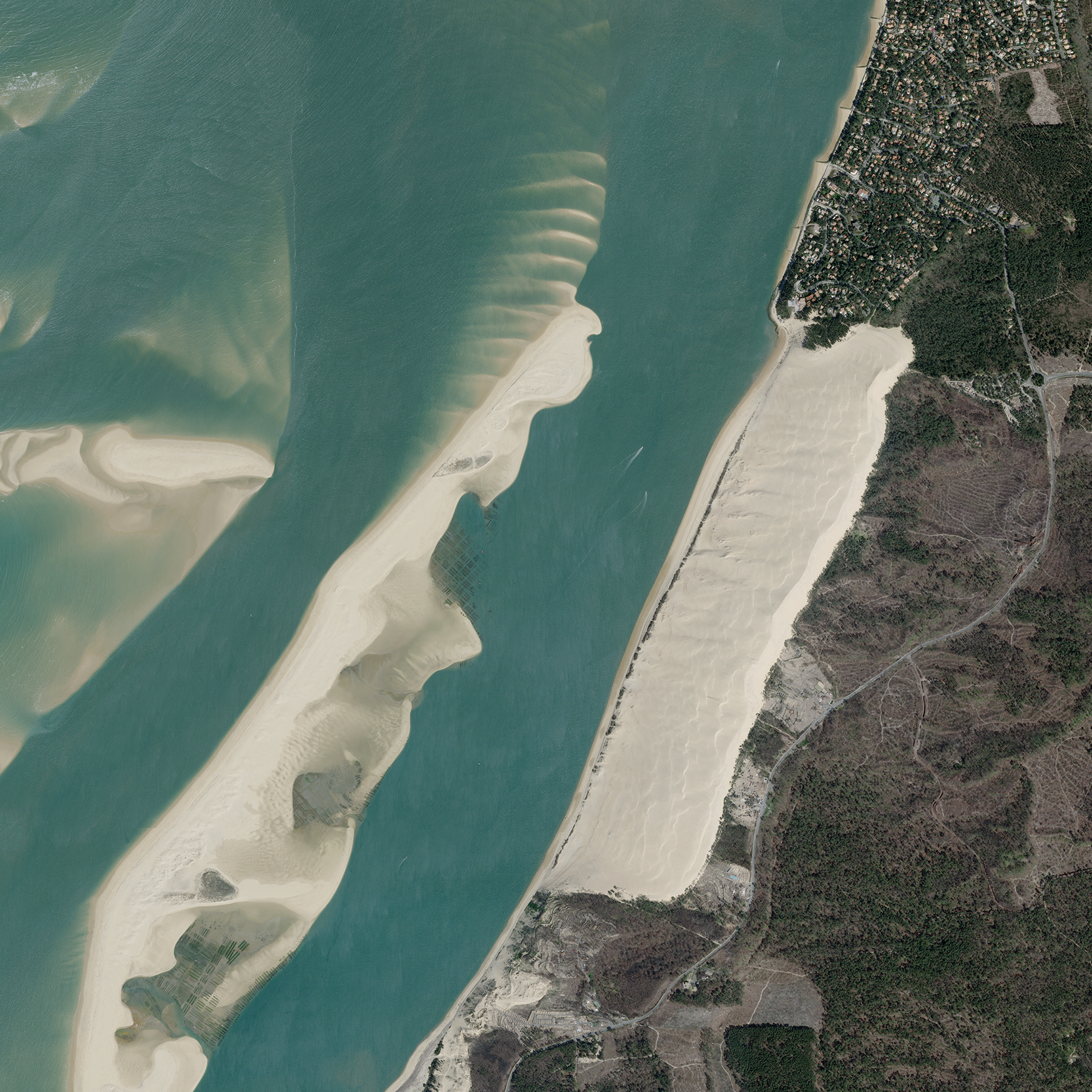 |
SkySat • Dune of Pilat, France • April 4, 2023 |
If your younger self thought quicksand was going to be a big problem as an adult, well you were actually right. Sand is depleting… quickly. Every year we pull 50 billion tons of sand from Earth’s shores. Put in other words, that’s an elephant’s weight in sand per person each year. We’re using twice as much as is being replaced by sediment. And rapid urbanization and booming sand-consuming industries are still on the rise. Like an hourglass getting bottom-heavy, we’re a few grains away from running out. |
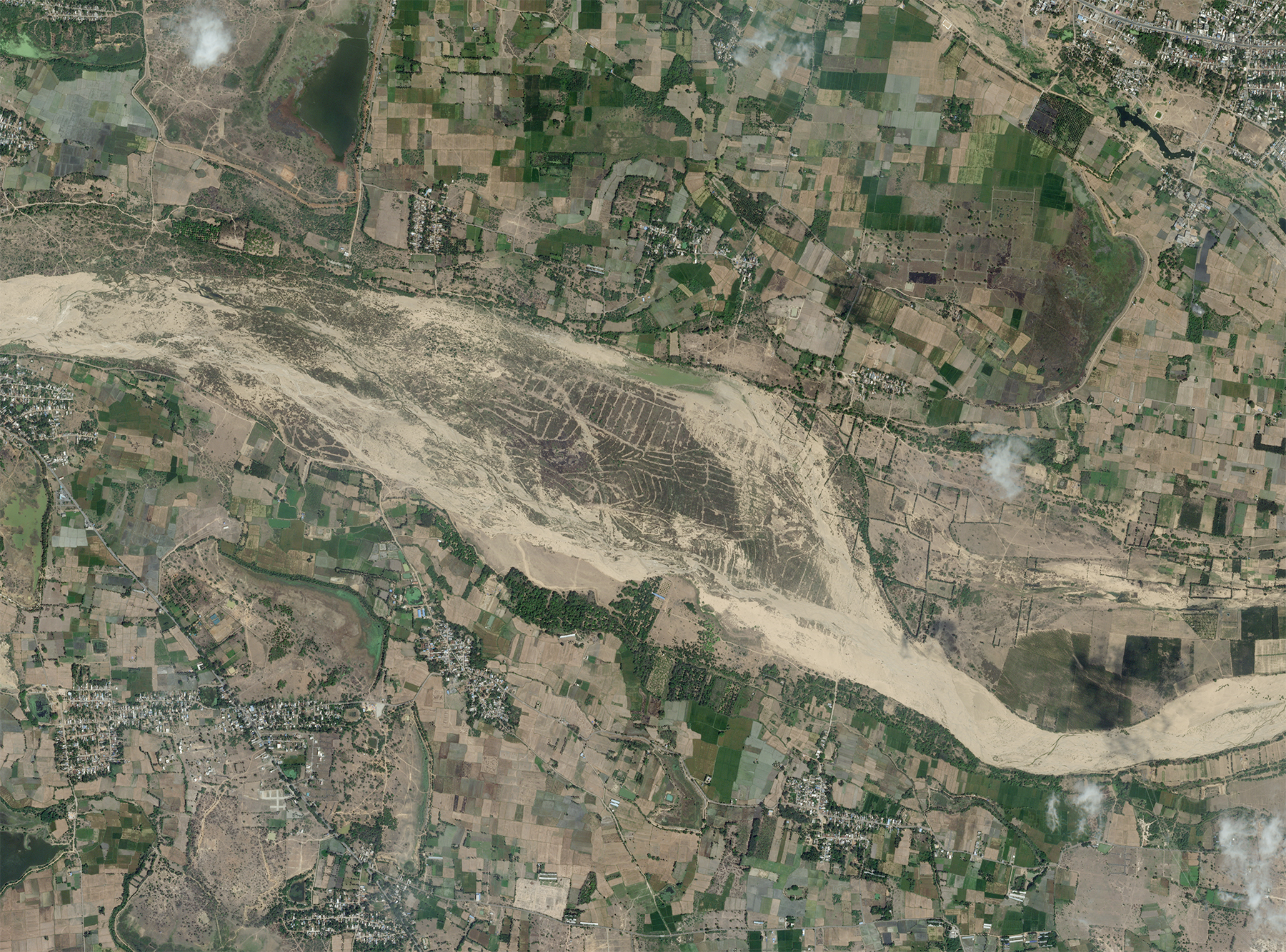 |
SkySat • Excavation marks in the Palar River bed, India • April 11, 2023 |
In rapidly-growing countries like China and India, the sand balance is particularly unsustainable. US cement consumption over the past 115 years hasn’t even reached a third of what China has used in the past decade. The impact of this mining? Desecrated ecosystems, abnormally low water levels, rapid erosion, pockets of coastlines missing, and changed shapes of rivers and lakes. In China, mining along the Yangtze River got so bad it was banned, so operations moved to Poyang Lake. |
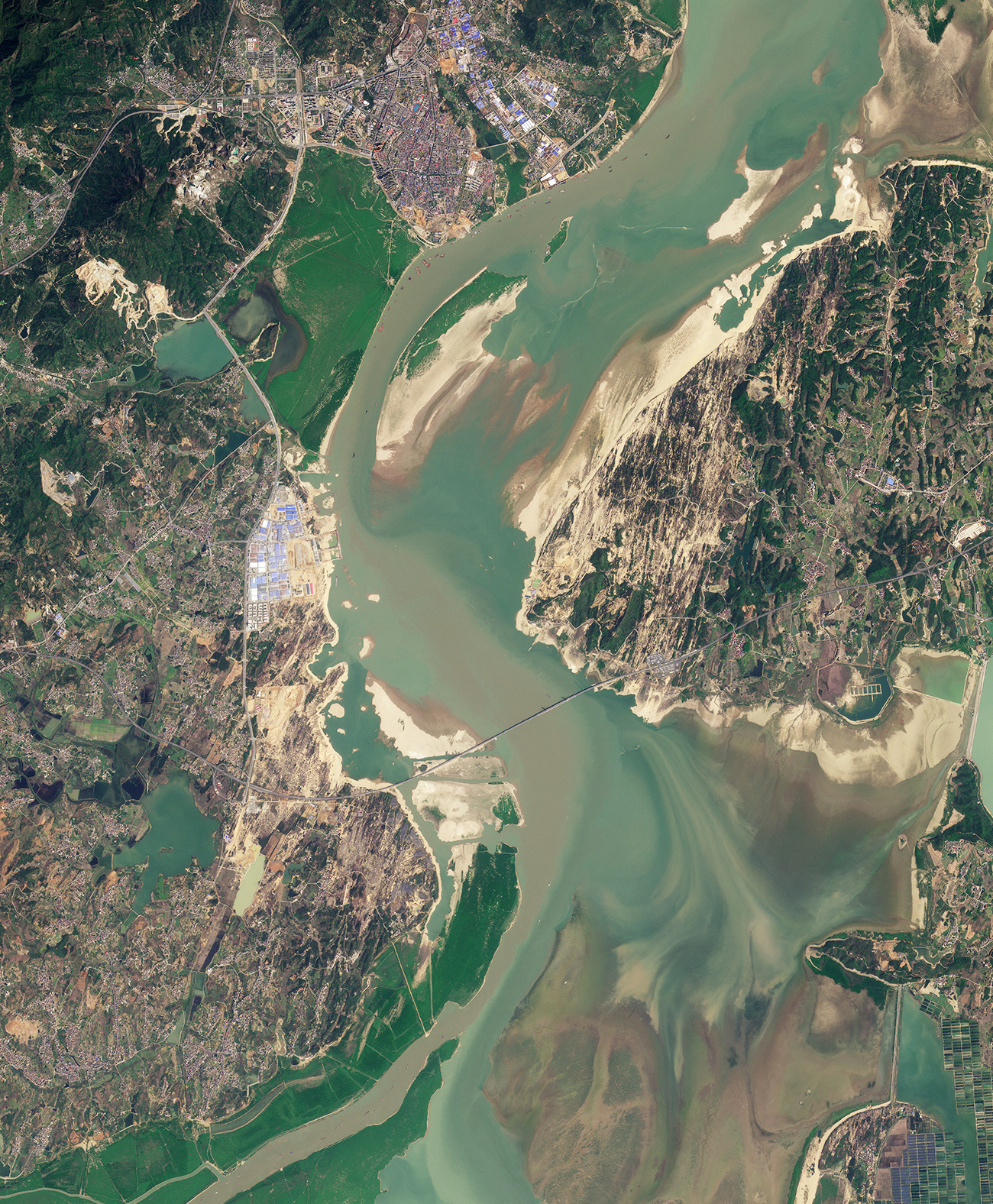 |
PlanetScope • Poyang Lake, China • April 2, 2023 |
Rivers replace lost sand through the transport of upstream sediment. Meaning that extraction can be sustainable under regulated conditions. But the problem is twofold: we’re currently taking more than is naturally replenished, and the construction of dams—made from sand-laden concrete—is rapidly reducing the amount of sediment that reaches downstream areas. EOMAP (an aquatic-focused remote sensing company) and Reuters analyzed satellite images to calculate that dams on the Mekong reduced sediment load by an average of 81%. |
 |
SkySat • Nuozhadu Dam, Yunnan, China • October 20, 2022 |
Sand loss at this scale can have catastrophic downstream effects: coastal erosion, less nutrient transport, and disrupted livelihoods. In the Mekong Delta, sand mining and numerous upstream dams are precipitating a crisis. Its 20 million residents care for one of Asia’s critical rice supplies, but mining has lowered the river by more than 3 feet (1 meter) and ruined fields through salt water infiltration. |
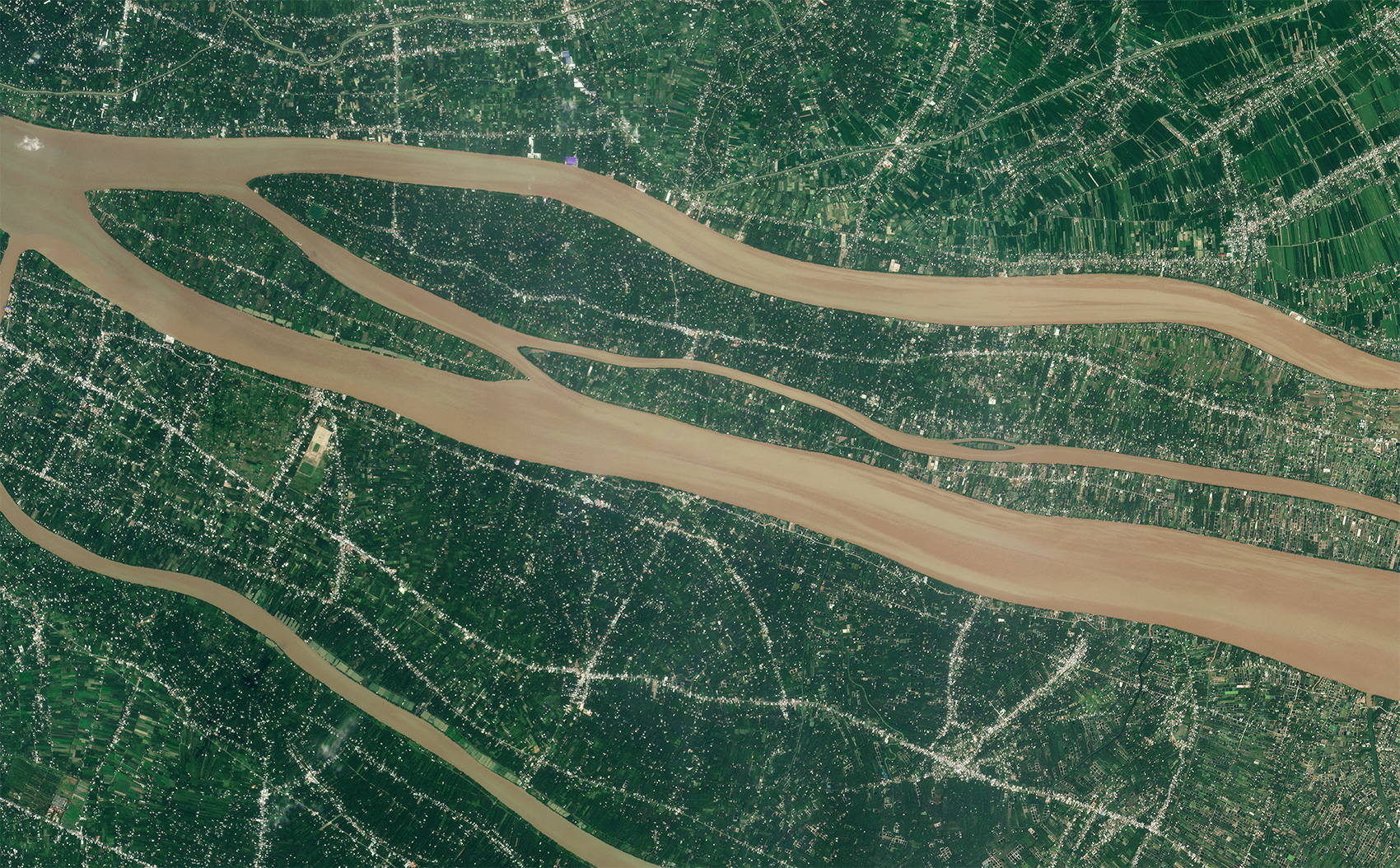 |
PlanetScope • Sediment flows along rivers in the Mekong River Delta, Vietnam • January 23, 2023 |
As sand extraction increases, so does sand-bagging behavior. China has been dredging sand from Taiwanese-controlled waters in the midst of ongoing geopolitical tensions. In 2020, Taiwan reportedly expelled close to 4,000 Chinese ships used for dredging and transporting sand, a huge upswing from the 2 ships expelled only 3 years earlier in 2017. |
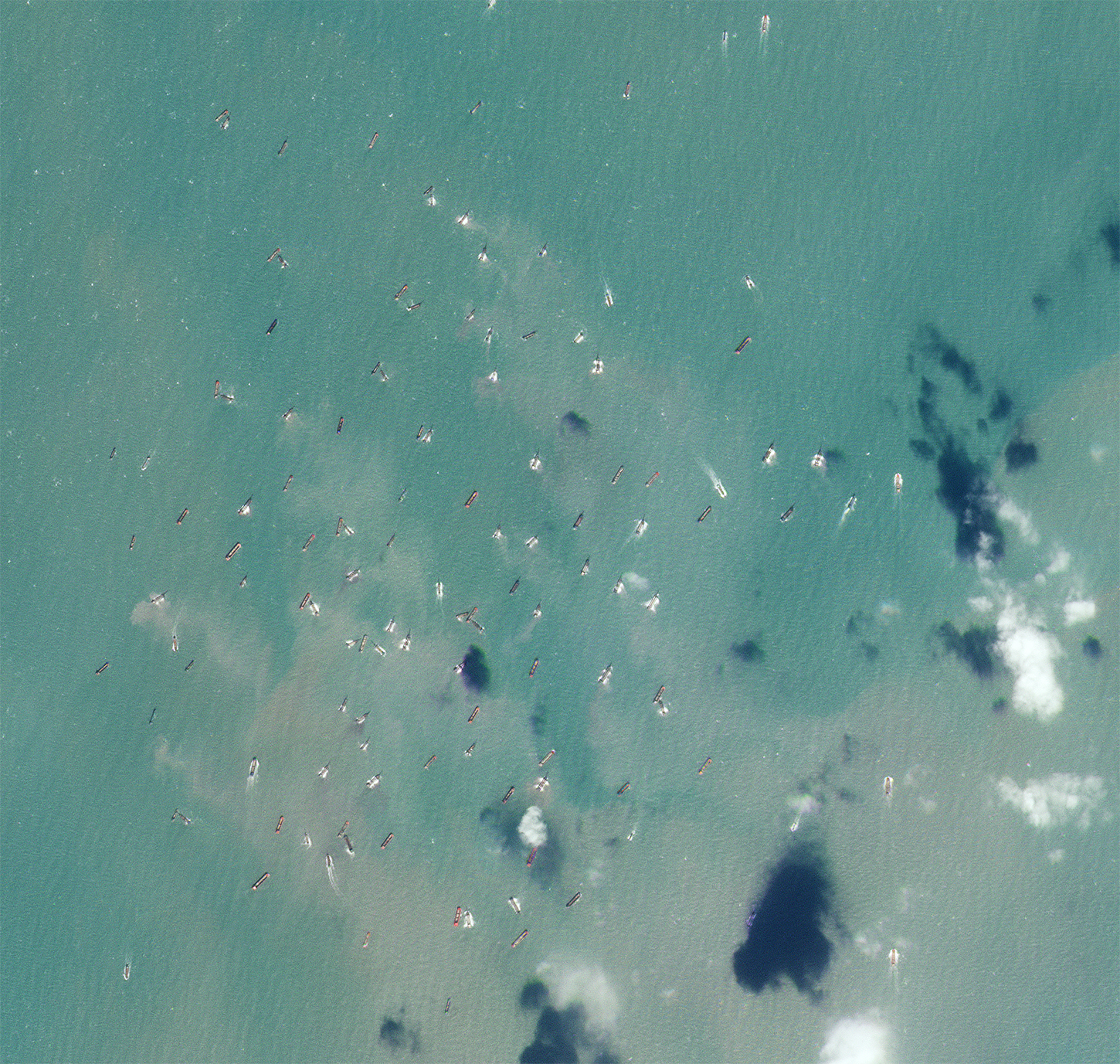 |
|
|
Part of China’s sand demand is land reclamation. By dumping sediment onto reefs, the country is constructing island outposts in remote waters. But other countries like The Netherlands are using sand to buffer their coasts against sea level rise and storm surges. Their Sand Motor is made from dredged sand from the North Sea and is an experiment in adaptation that could be replicated elsewhere. |
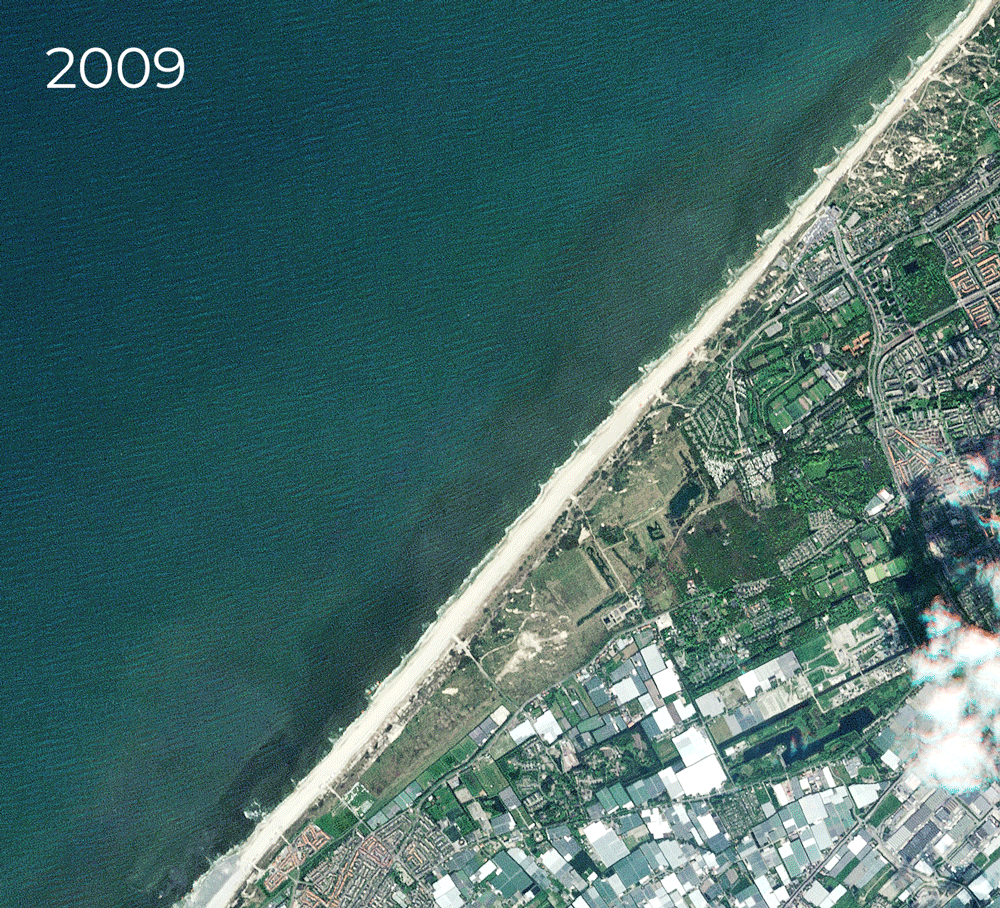 |
RapidEye & PlanetScope • Sand Motor, The Netherlands • 2009 - 2022 |
The shifting sands appear bleak for some places, but they also create opportunities elsewhere. Alternative technologies like manufactured sand or recycling materials can help alleviate demand. And Greenland may turn a dire climate consequence into an economic venture. The island’s rapidly melting ice is promoting a huge surge in sediment runoff, providing the island with abundant sand just as the rest of the world experiences a shortage. |
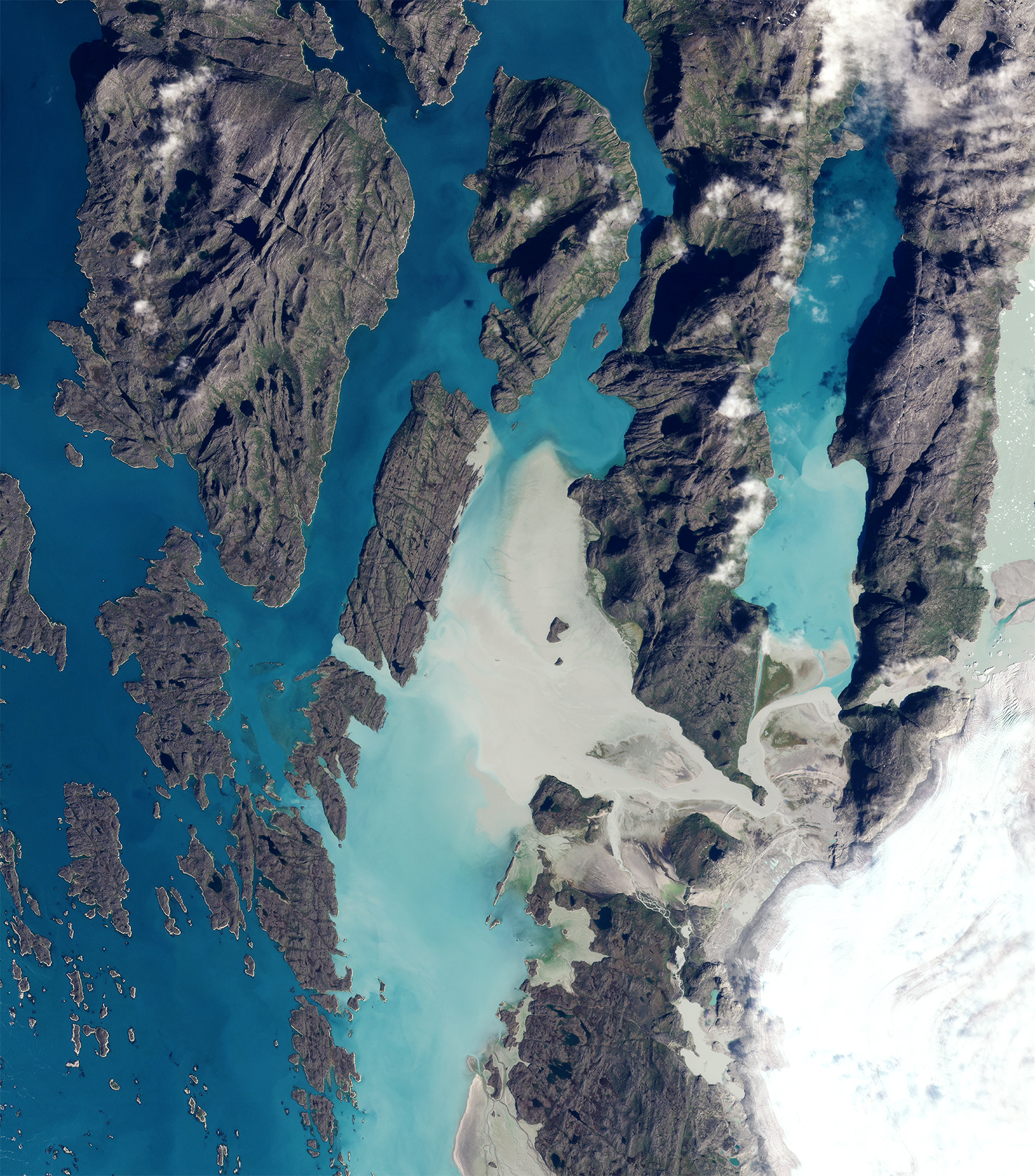 |
PlanetScope • Sediment runoff from Frederikshaab Glacier, Greenland • September 9, 2022 |
Sand makes the world go round, yet the importance of these roundish grains have been largely overlooked. Without regulation, sand mafias are distorting economic markets and overriding attempts for sustainable extraction. There’s no stopping the global growth expected in the coming decades. But we can make sure that the future is built on a solid foundation. |
|
|
|
|
|
|
|
|
|
|
|
Remote SensationsGlacial Volcanism
Some say the world will end in fire, some say in ice. But why not both? Despite their seemingly paradoxical nature, glaciers and volcanoes are a pretty common pairing. Beerenberg is a glacier-covered volcano located about 650 km (400 miles) northeast of Iceland on the Norwegian Jan Mayen Island, making it the world’s most northern volcano.
|
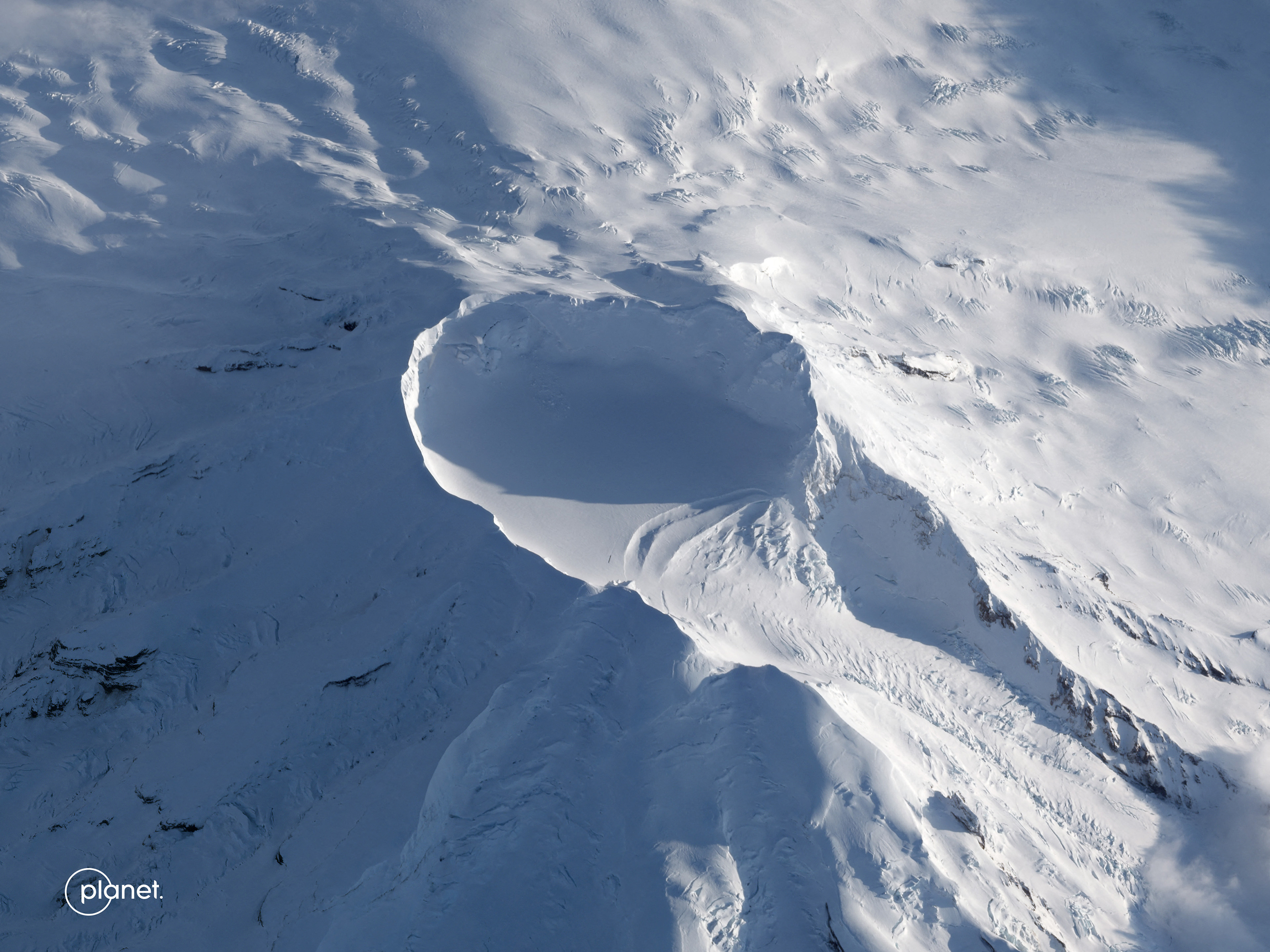 |
SkySat • Beerenberg, Norway • April 23, 2023 |
Volcanoes lie underneath glaciers in Iceland. When they erupt they create huge amounts of meltwater that are carried across the island. The black streaks seen in this glacier are from ash deposited after one of these eruptions. |
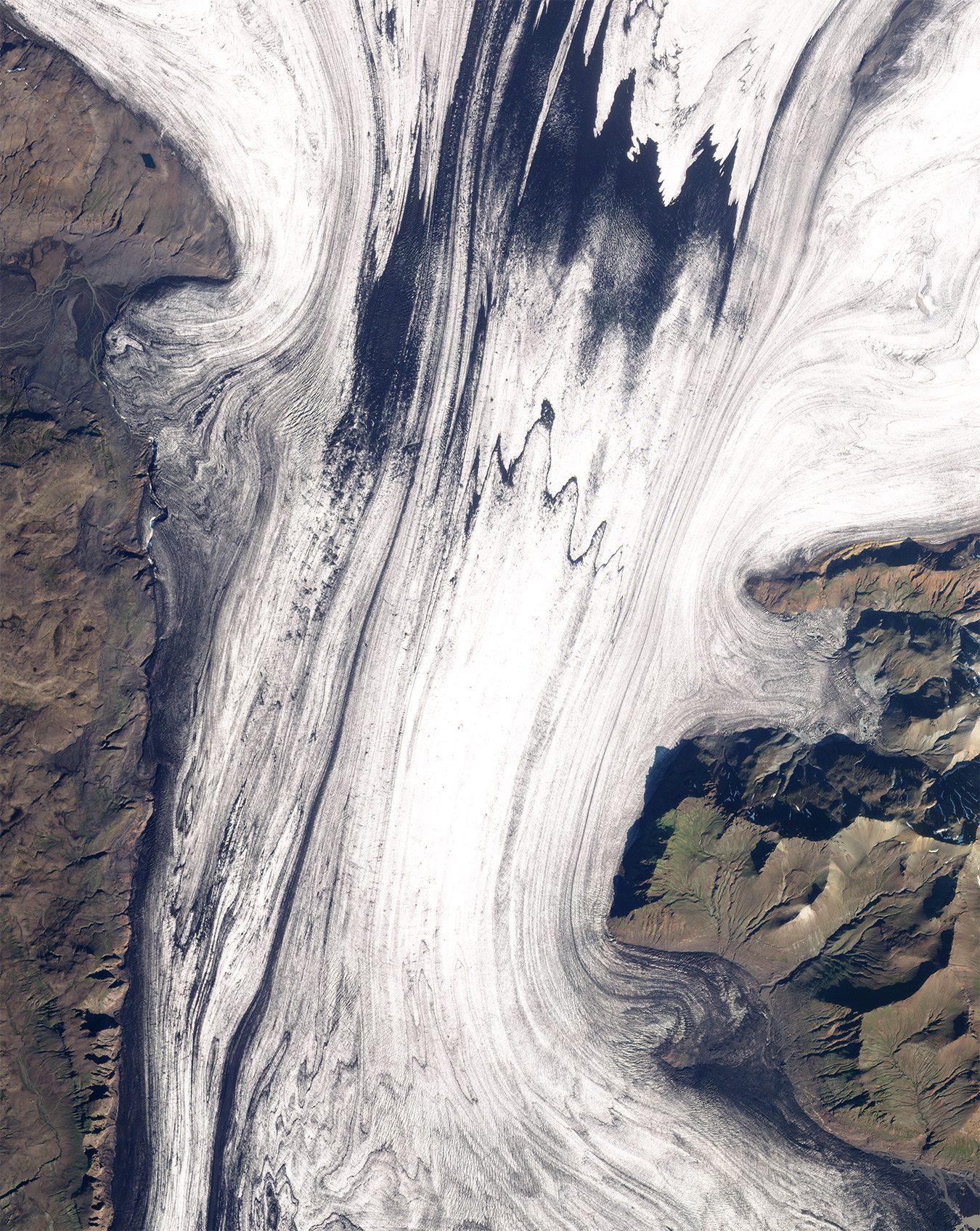 |
PlanetScope • Skeiðarárjökull, Iceland • September 16, 2022 |
These fiery, icy behemoths aren’t just found way up north, but also in the Southern Hemisphere. Check out this glacier hiding in the caldera of Chile’s Sollipulli volcano. |
 |
SkySat • Sollipulli, Chile • April 19, 2023 |
|
|
|
|
|
Weekly Revisit
Last week we celebrated Earth Day with some remarkable scenes of our planet. So check it out in case you missed it and read more stories from the full archive if you’re extra curious. |
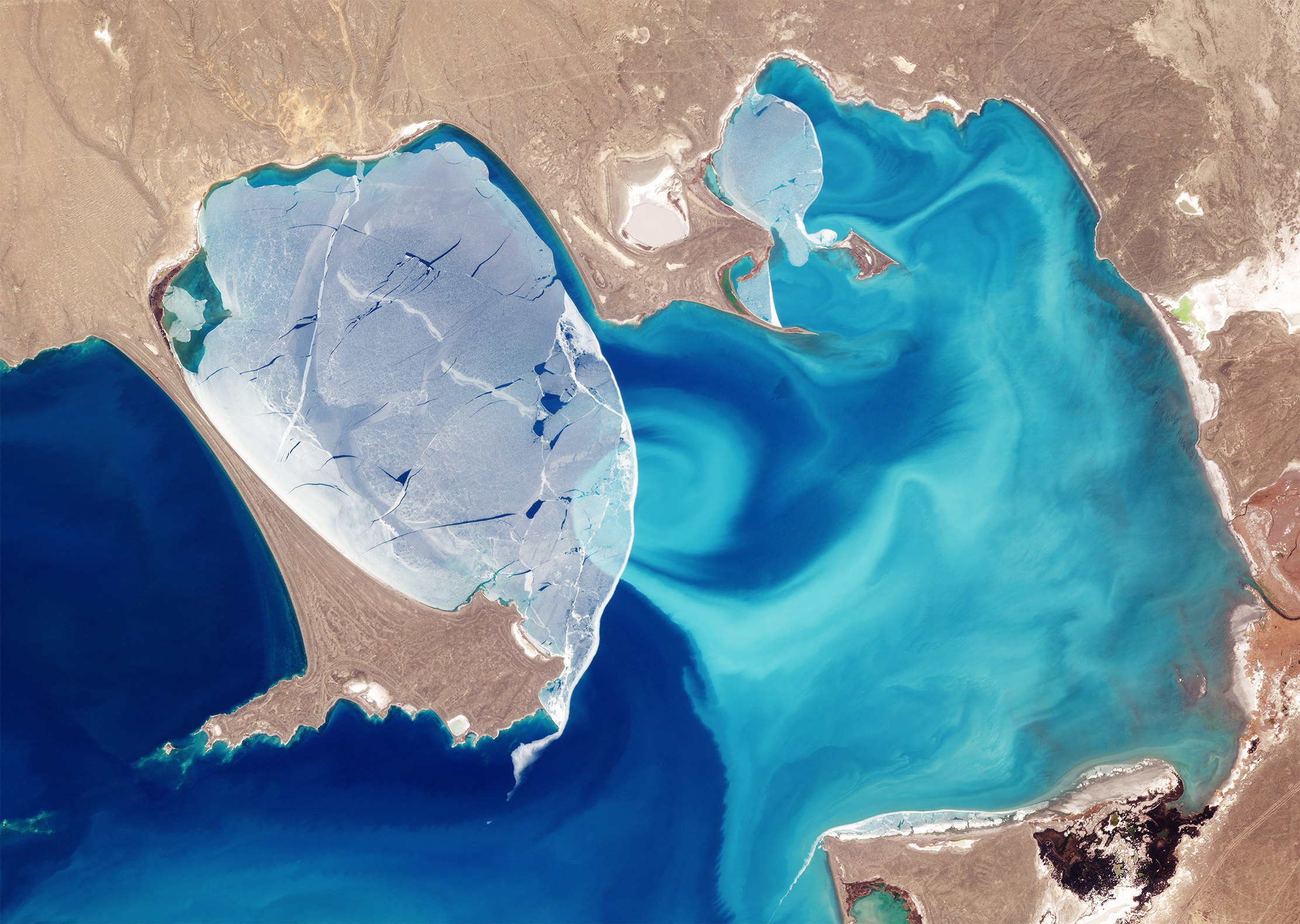 |
PlanetScope • Lake Balkhash, Kazakhstan • April 5, 2023 |
|
|
|
|